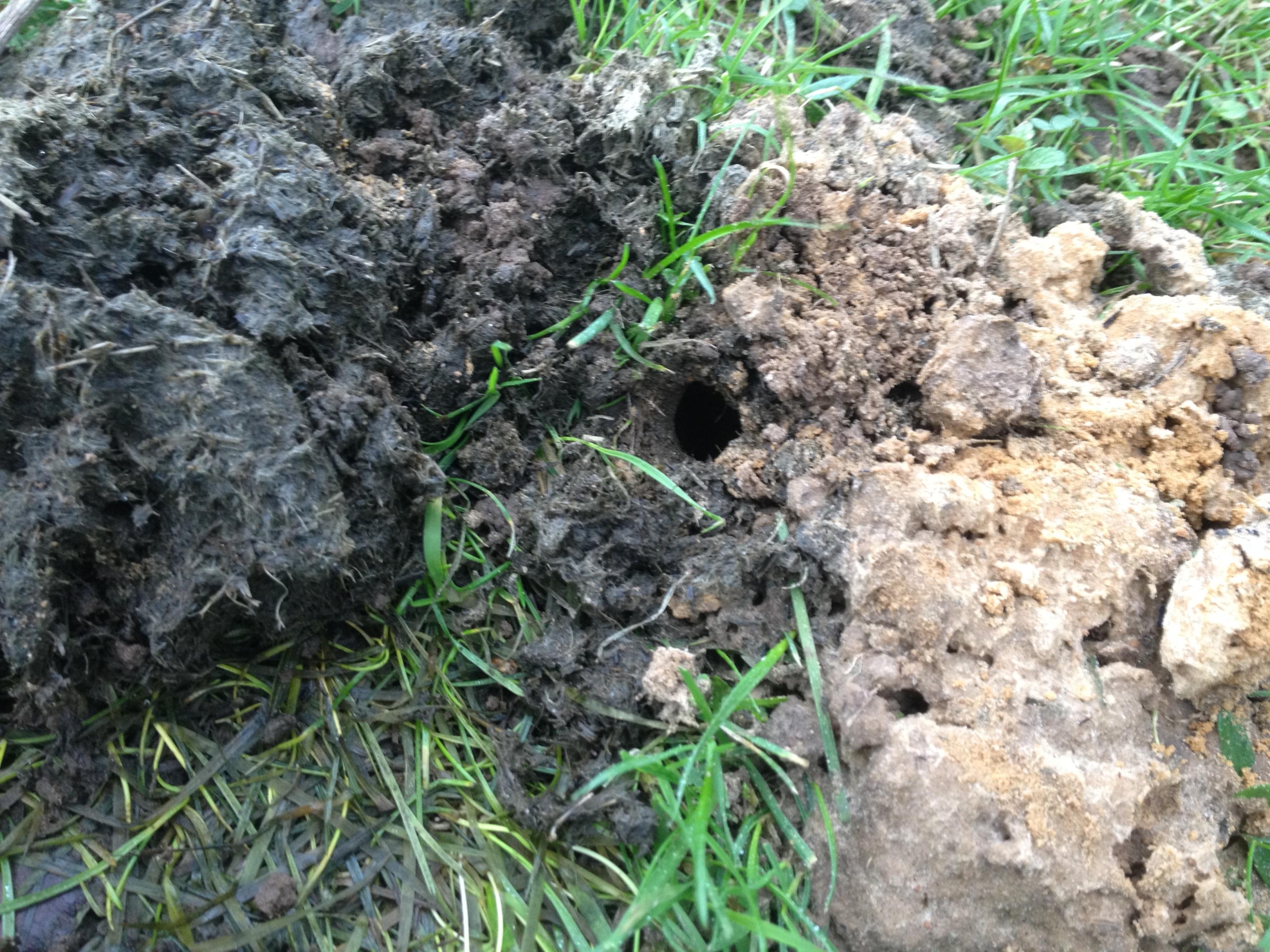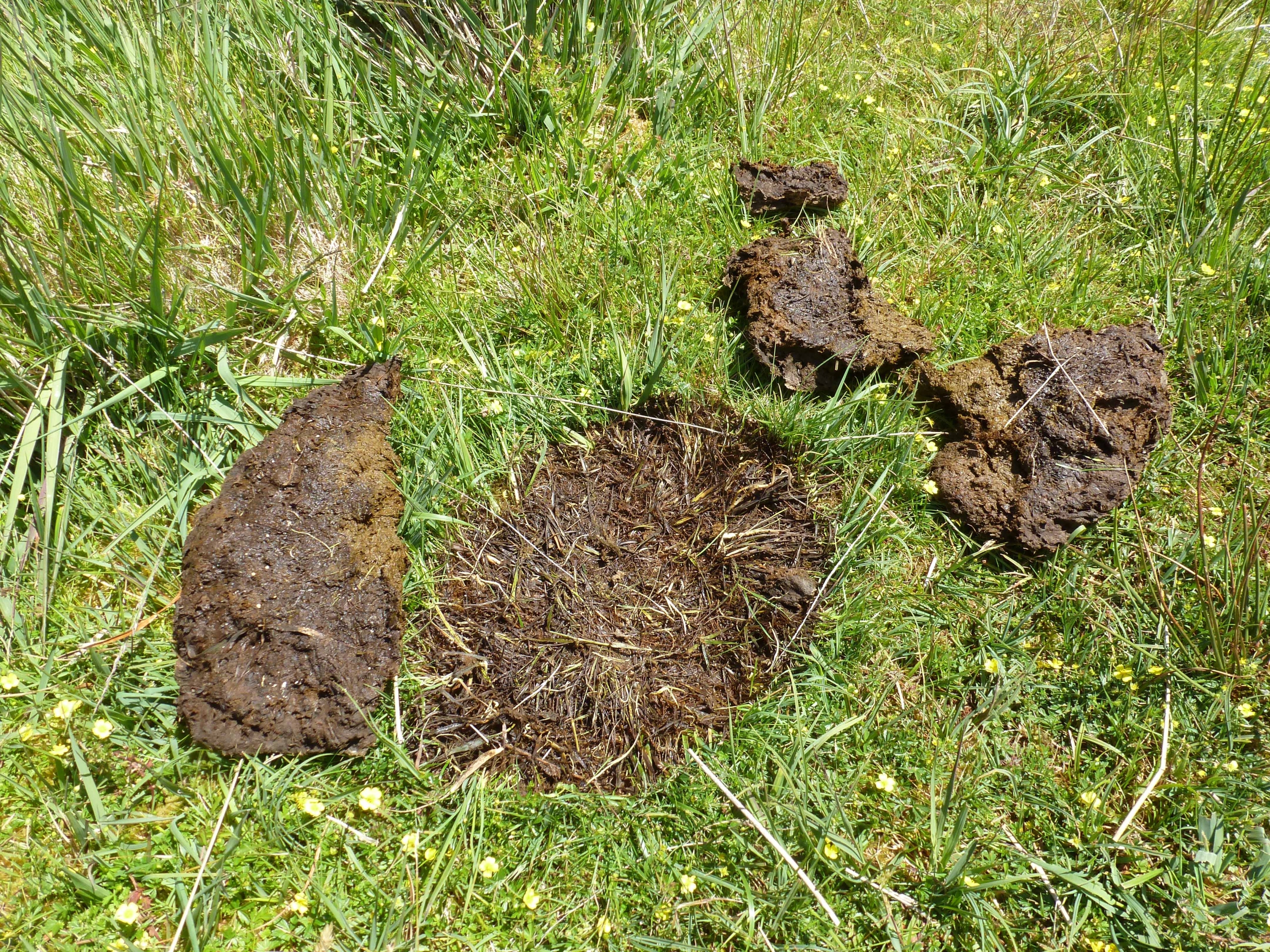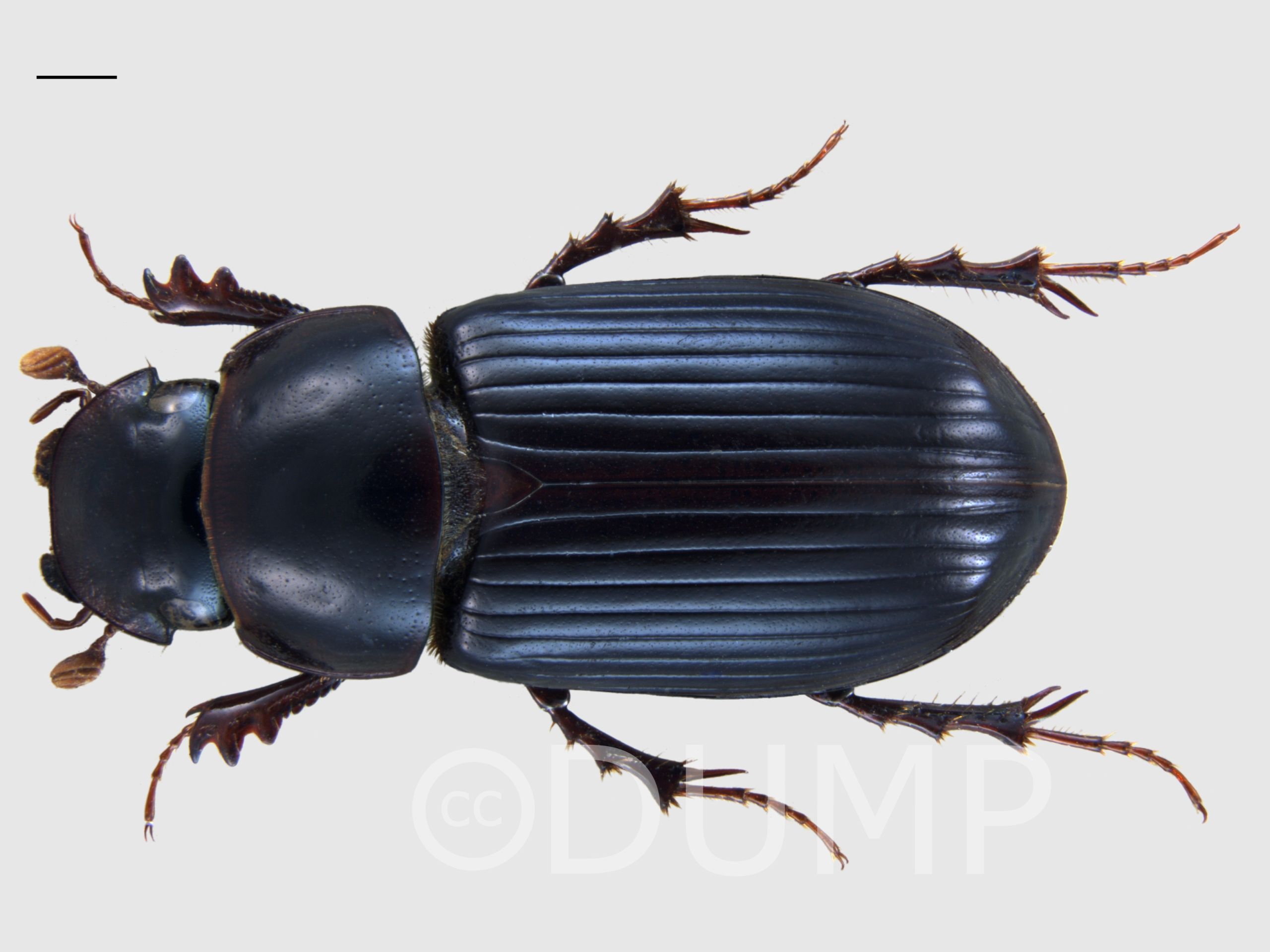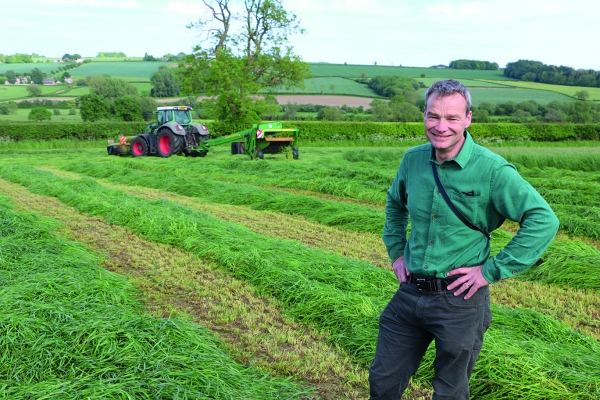Dung beetles: Keeping pasture healthy and livestock happy
In the UK, there are around 60 species of dung beetle. By going about their daily business, dung beetles provide an array of ecosystem services and it has been estimated that they save the UK cattle industry £367 million per annum1. How? Let’s delve deeper!
Dung is an important source of nutrients. For these to be unlocked and available for plant growth, dung must be incorporated into the soil2. Fungi, bacteria and weathering play a part in dung decomposition but a suite of invertebrates including flies, worms and beetles play a major role. Dung beetles are one of the key players and are often grouped according to their breeding behaviour. The rollers (telecoprids) are typically what people think of – a beetle pushing a neat ball across the African savannah. These do not occur in the UK but the two other groups do. Dwellers (endocoprids) eat, live and breed directly in the dung or just under the soil surface and form the majority of British species. The tunnelers (paracoprids), dig a burrow under the pile and drag the dung down to a metre or more to provision a breeding chamber, where the larvae develop.
By burying dung, the beetles improve soil condition through nutrient recycling and the redistribution of associated fungi and bacteria. As the beetles dig, the soil is turned over (see below), aerating it, and this in turn helps rainfall infiltration too.

Dung burial also encourages earthworms to aggregate under dung pads3, enhancing decomposition further. Given the right conditions, with a sufficient dung beetle population, a dung pad can reduce around 70% in a couple of days. If on the other hand, the dung beetle population is depleted, pasture fouling can be a major problem. Dung lies on the sward, underneath the grass dies and a grazing avoidance zone surrounds it (see below). Dung often remains on the surface for a several months, reducing pasture productivity all the while.

Dung beetles also help tackle gastrointestinal parasites and nuisance flies. Parasite eggs are excreted from an infected host in the dung. The eggs hatch, larvae develop until the third instar then migrate into the surrounding pasture. A grazing animal ingests the larvae, completing the lifecycle. By removing dung and drying out the pat, dung beetles reduce the availability and suitability of the larval habitat, breaking the lifecycle4. Nuisance flies are also reduced in this way but are additionally targeted by an army of predatory mites that feed on fly eggs and maggots. At around 1mm, the mites are rather small and traversing a field is a challenge. The solution – grab hold of a dung beetle, hunker down on the body and hitch a ride to the next pat.
Now consider bats and farmland birds. Acrossus rufipes is a medium sized dweller that flies at dusk. It is one of the main food sources for many bats. Barn swallows will take beetles on the wing and jackdaws, starlings and lapwings dig through dung to find tasty beetle larvae.

It’s not all good news though. Dung beetles are in trouble and a few have already become extinct in this country. Changes in farming practices are contributing to this decline. The combination of intensification, increased chemical use and shedding livestock is taking a toll. Lush pasture means dung comes out runny. Dung beetles drown or feed at the very edge but it isn’t good for breeding. Year on year, this will reduce numbers. No dung = no dung beetles so removing livestock from all fields is detrimental. Veterinary wormers pass through the gut unaltered and are excreted in dung and can persist for several weeks. Larvae can be killed outright or development is delayed. Adults are more robust but reproductive success is seriously hampered. Over time, this reproductive depression will have devastating population consequences5. Avermectins are some of the most toxic and also the most widely used. Long acting formulas compound the problem further.
So, what can be done to encourage dung beetles on farmland?
- Assess the situation. How quickly is the dung being broken down? During the summer, dung beetle activity should be obvious. Look for holes in the dung, signs of tunnelling, friable dung etc.

- Discover what species you have. Survey methods and identification sheets are freely available on the DUMP website. Some species are easier to identify than others, if you are unsure, take a close-up photo of the top and bottom surface of the beetle put it on iRecord or email us. We can help identify many species this way and you will get feedback.
- Faecal egg counts are a great way to reduce wormer use by only targeting the animals that need treating and this saves costs too.
- Look at the administration period, can you avoid the height of beetle activity in April/May and August/September?
- Can you worm 10 days before spring turnout? This gives time for chemicals to pass through the gut.
- Opt for shorter acting chemicals rather than long acting avermectins.
- Maintain some year-round grazing, just three or four outdoor animals will make a big difference.
As with many systems, a combined approach is probably best and no two farms will be the same. It can be a challenge but the rewards in terms of pasture health, livestock wellbeing and biodiversity gain are well worth the effort. To find out more, please visit the DUMP website, follow us on Twitter or send us an email.
Ceri Mann says of herself:
“Growing up on a smallholding in Gloucestershire gave me an appreciation for farming and nature. This led to studying environmental science and biology as an undergraduate and subsequently entomology. I think it’s fair to say that I am now a dung beetle addict! I am currently doing DPhil (PhD) on British dung beetles and any spare time is split between renovating our house, DUMP and the biological recording of scarabs.
Sustainable farming is so important, we really do need to use the land wisely to ensure its in good condition to support our needs, not just now but in the future too. One of the ways to do this is to look after the insects. They are usually bottom of the food chain and will sustain many, many other animals and therefore contribute above their weight in ecological systems. By supporting the insects, we can have a huge positive impact on the biodiversity and health of our farmland.”
References
- 1 Beynon, Sarah A., Wainwright, Warwick A., & Christie, Michael. (2015). The application of an ecosystem services framework to estimate the economic value of dung beetles to the U.K. cattle industry. Ecological Entomology, 40(1), 124-135.
- 2 Nichols, E. et al. (2008) Ecological functions and ecosystem services provided by Scarabaeinae dung beetles. Biological Conservation 141(6), 1461-1474.
- 3 Holter, P. (1979). Effect of Dung-Beetles (Aphodius spp.) and Earthworms on the Disappearance of Cattle Dung. Oikos, 32(3), 393-402.
- 4 Sands, B., & Wall, R. (2017). Dung beetles reduce livestock gastrointestinal parasite availability on pasture. Journal Of Applied Ecology, 54(4), 1180-1189.
- 5 Sands, & Wall. (2018). Sustained parasiticide use in cattle farming affects dung beetle functional assemblages. Agriculture, Ecosystems and Environment, 265, 226-235.


